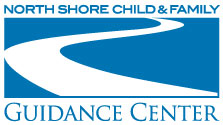Alcohol – Substance Use
Alcohol and Substance Use
Alcohol and substance use have direct connections to mental health, especially for children and teenagers. Alcohol, tobacco and marijuana are the most common substances used by teenagers. Substance use can affect the brain development of children and teenagers, which can have lasting effects into adulthood. Substance use is also associated with risky or unsafe behaviors. According to the Centers for Disease Control and Prevention, the younger someone is when they begin using these substances, the higher the chances are that they will continue to use these substances or become addicted in adulthood.
Substance use is more likely among teenagers who have mental health disorders such as anxiety or depression. Additionally, substance use can aggravate the symptoms of these disorders. The Child Mind Institute reports that these substances can temporarily alleviate the symptoms of these disorders since they affect the brain regions involved in the disorders, but it also leads the teenagers to feel even worse without the substances.
Drug and alcohol treatment and prevention services are provided for adolescents, young children ages 6-24, and their families at the Guidance Center’s Leeds Place – Serving Young People in Westbury. Substance use services include counseling youths who are alcohol and drug users, children who live in families with a parent who is suffering from alcoholism or drug addiction and youths who have co-occurring chemical dependency and mental health problems. Prevention services are also offered to local school districts. For more information about our services, please call us at 516-626-1971.
Related programs and services:
Adolescent Outpatient Chemical Dependency Treatment
Read more in our blog:
How to Talk to Your Kids About Drugs
Kratom: A Drug Parents Should Know About
How Kids are Affected by the Drug Epidemic
Sources:
Child Mind Institute: Mental Health Disorders and Teen Substance Use
